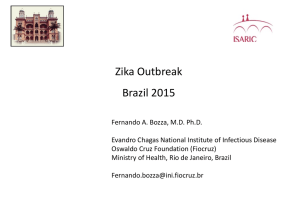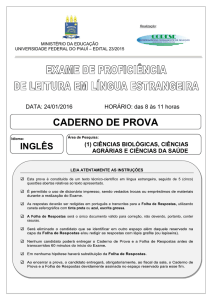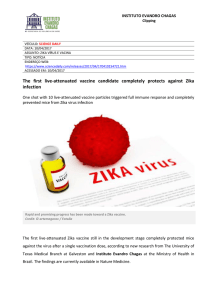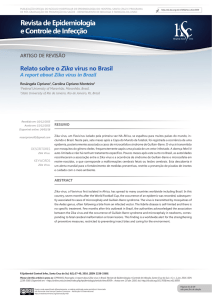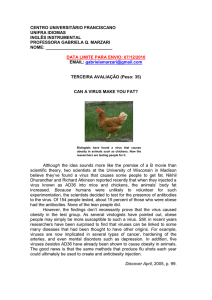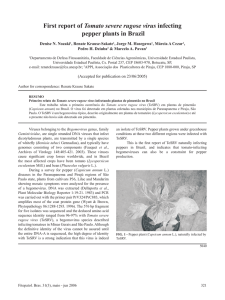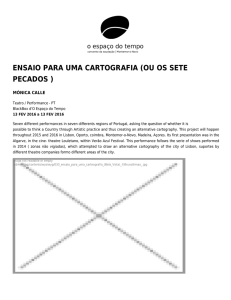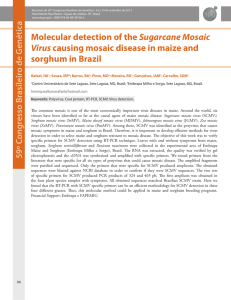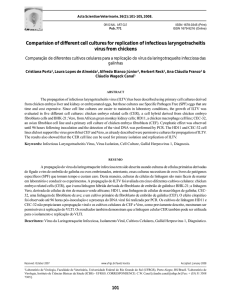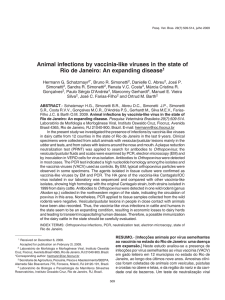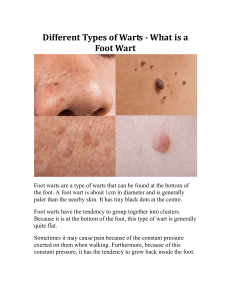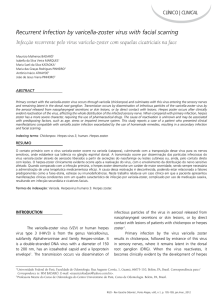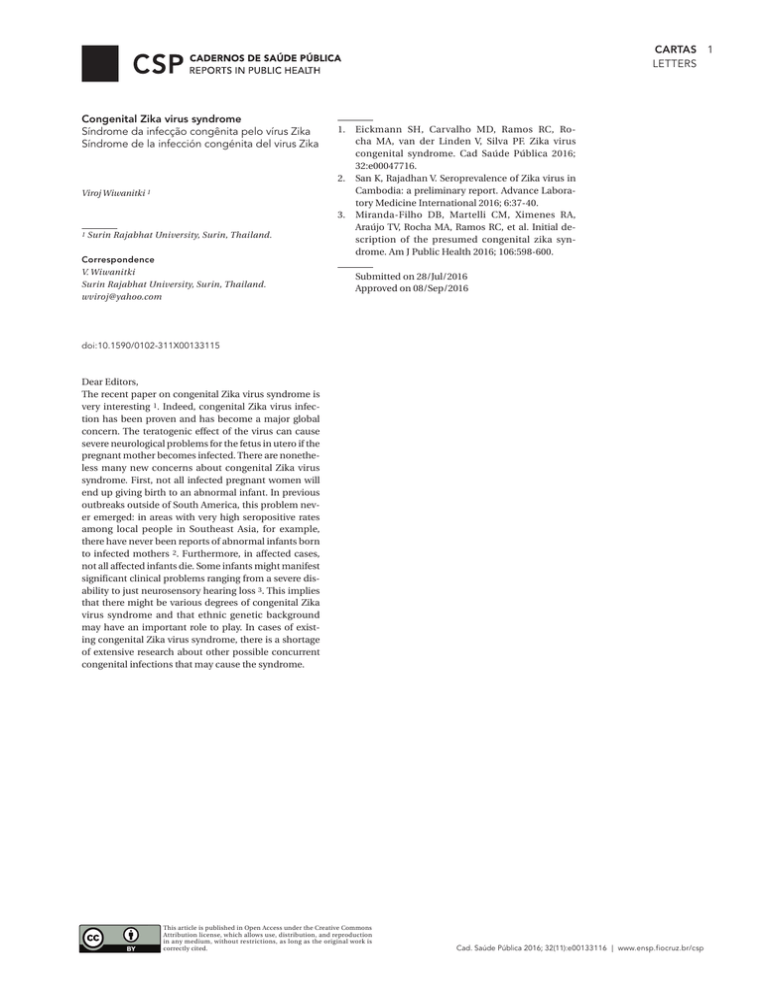
cartaS
letterS
Congenital Zika virus syndrome
Síndrome da infecção congênita pelo vírus Zika
Síndrome de la infección congénita del virus Zika
Viroj Wiwanitki 1
1
Surin Rajabhat University, Surin, Thailand.
Correspondence
V. Wiwanitki
Surin Rajabhat University, Surin, Thailand.
[email protected]
1. Eickmann SH, Carvalho MD, Ramos RC, Rocha MA, van der Linden V, Silva PF. Zika virus
congenital syndrome. Cad Saúde Pública 2016;
32:e00047716.
2. San K, Rajadhan V. Seroprevalence of Zika virus in
Cambodia: a preliminary report. Advance Laboratory Medicine International 2016; 6:37-40.
3. Miranda-Filho DB, Martelli CM, Ximenes RA,
Araújo TV, Rocha MA, Ramos RC, et al. Initial description of the presumed congenital zika syndrome. Am J Public Health 2016; 106:598-600.
Submitted on 28/Jul/2016
Approved on 08/Sep/2016
doi:10.1590/0102-311X00133115
Dear Editors,
The recent paper on congenital Zika virus syndrome is
very interesting 1. Indeed, congenital Zika virus infection has been proven and has become a major global
concern. The teratogenic effect of the virus can cause
severe neurological problems for the fetus in utero if the
pregnant mother becomes infected. There are nonetheless many new concerns about congenital Zika virus
syndrome. First, not all infected pregnant women will
end up giving birth to an abnormal infant. In previous
outbreaks outside of South America, this problem never emerged: in areas with very high seropositive rates
among local people in Southeast Asia, for example,
there have never been reports of abnormal infants born
to infected mothers 2. Furthermore, in affected cases,
not all affected infants die. Some infants might manifest
significant clinical problems ranging from a severe disability to just neurosensory hearing loss 3. This implies
that there might be various degrees of congenital Zika
virus syndrome and that ethnic genetic background
may have an important role to play. In cases of existing congenital Zika virus syndrome, there is a shortage
of extensive research about other possible concurrent
congenital infections that may cause the syndrome.
This article is published in Open Access under the Creative Commons
Attribution license, which allows use, distribution, and reproduction
in any medium, without restrictions, as long as the original work is
correctly cited.
Cad. Saúde Pública 2016; 32(11):e00133116 | www.ensp.fiocruz.br/csp
1

